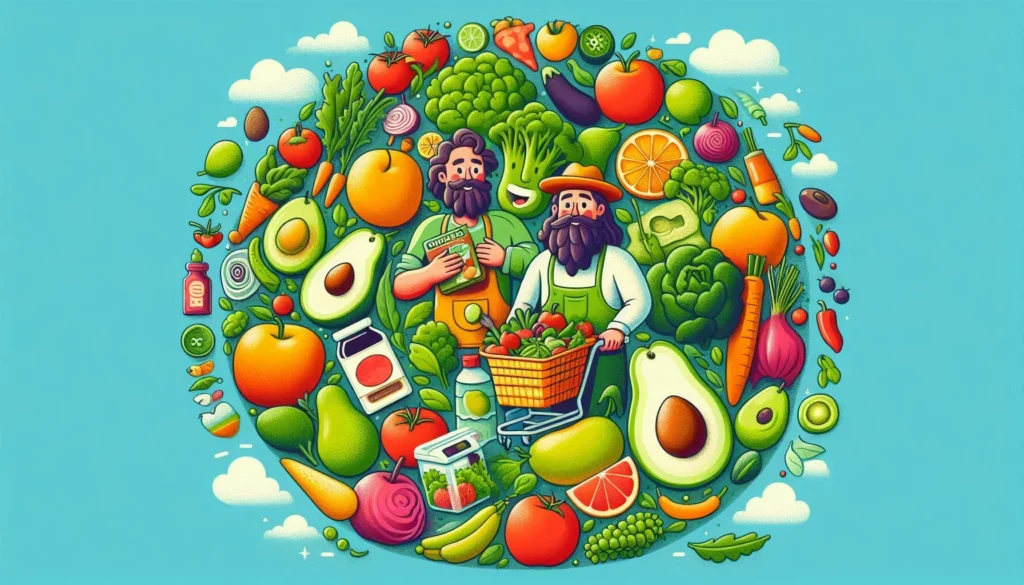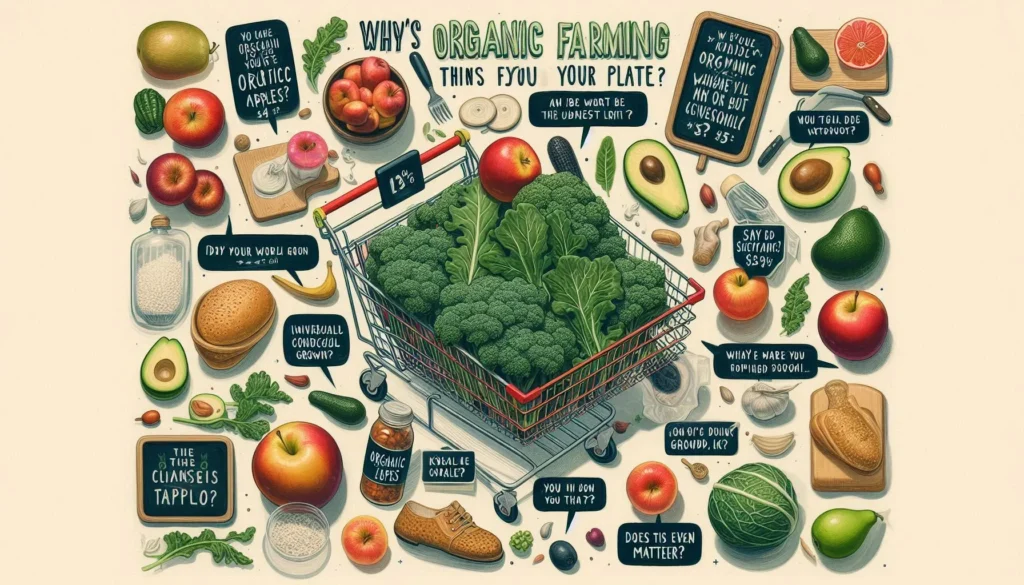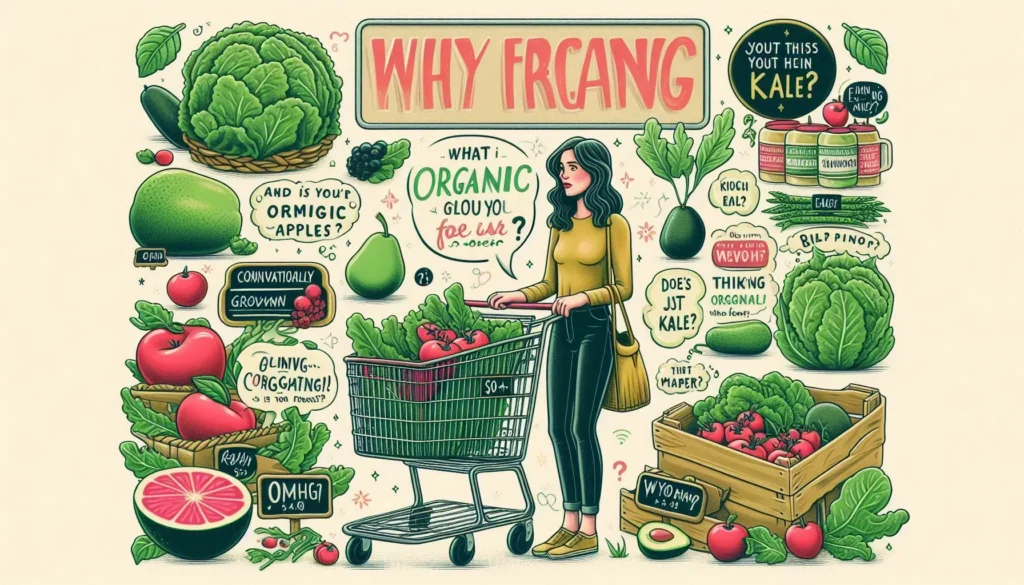Let’s talk about your last grocery trip. Did you pause at the organic apples, wondering if they’re worth the extra dollar? Or maybe you’ve guiltily tossed a conventionally grown avocado into your cart, thinking, Does this even matter? You’re not alone. Organic farming has exploded from a niche hippie movement to a $100+ billion global industry, and it’s reshaping how we eat, shop, and think about food. But why now? Let’s dig into the roots of this green revolution—and explore the messy, fascinating reality behind those pretty “certified organic” labels.
Health Consciousness: The Body-First Movement

We’ve all heard the pitch: Organic = healthier. But is it true? Studies suggest organic foods have lower pesticide residues and higher levels of certain nutrients, like antioxidants. For example, a 2016 meta-analysis found organic crops contain up to 69% more antioxidants than conventionally grown ones. With chronic diseases and food allergies on the rise, it’s no wonder shoppers are voting with their wallets.

The pandemic turbocharged this trend. Suddenly, “immunity-boosting” became a kitchen mantra, and organic produce—free from synthetic chemicals—felt like a safer bet. As one mom from Colorado put it, “If I’m stuck at home, I might as well feed my kids the cleanest stuff possible.”
But let’s be real: organic doesn’t automatically mean “nutrient-packed.” A carrot’s health value depends on soil quality, farming practices, and even when it’s harvested. Still, the peace of mind factor? Priceless.
Environmental Awareness: Saving the Planet, One Bite at a Time
Here’s where organic farming shines. Conventional agriculture relies on synthetic fertilizers and pesticides that leach into waterways, harm pollinators, and degrade soil over time. Organic farming, by contrast, uses compost, crop rotation, and natural pest control. The result? Healthier soil that stores more carbon and supports biodiversity.
Take bees, for instance. Neonicotinoid pesticides used in conventional farming are linked to colony collapse disorder. Organic farms? They’re a haven for pollinators. According to the Soil Association, organic fields support up to 50% more wildlife.
But organic isn’t perfect. Critics argue that its lower yields mean we’d need more land to feed the world—potentially driving deforestation. It’s a classic “damned if you do, damned if you don’t” scenario.
Ethics on the Plate: Animal Welfare & Fair Labor
Organic isn’t just about plants. Livestock standards require animals to have outdoor access, organic feed, and no routine antibiotics. For conscious consumers, that’s a big deal. Imagine chickens actually pecking in a field instead of crammed in cages.
Then there’s the human side. Organic certification often includes fair labor practices, ensuring farmworkers aren’t exposed to toxic chemicals. It’s a step toward equity in an industry historically riddled with exploitation.
But let’s not romanticize it. Organic farms can still underpay workers or cut corners. The label doesn’t automatically equal “ethical.”
The Market’s Organic Makeover
Remember when organic meant a dusty corner of a health food store? Today, Walmart sells organic spinach and Costco hawks organic quinoa. The U.S. organic market hit $60 billion in 2022, with millennials and Gen Z leading the charge.

This shift isn’t just about demand. Big Agriculture has jumped in, buying up organic brands and scaling production. Purists groan about “Big Organic” diluting standards, but hey—it’s made kale chips mainstream.
The Price Paradox: Why We’re Willing to Pay More
Organic blueberries can cost twice as much as conventional ones. Yet sales keep climbing. Why?
- Perceived value: If it’s healthier and greener, it’s worth stretching the budget.
- The “halo effect”: Organic labels make us feel like responsible adults.
- Fear of the alternative: Images of pesticide-laden strawberries haunt Instagram feeds.
However this premium pricing excludes low-income families. Organic remains a luxury for many, sparking debates about food justice.
Nutritional Perks: Fact or Fiction?
The science is mixed. While organic foods often have more antioxidants, differences in vitamins or minerals are minimal. Taste, though? Many swear organic tomatoes burst with flavor lost in conventional varieties.
At the end of the day, nutrition hinges on diet diversity—not just farming methods.
The Flip Side: Challenges of Organic Farming
For all its perks, organic farming has glaring flaws:
- Lower Yields: Organic crops yield 10-25% less than conventional ones, raising concerns about global food security.
- Labor-Intensive: Weed control is done by hand or machine, not chemicals. More work = higher costs.
- Certification Hurdles: The USDA organic process is pricey and paperwork-heavy, sidelining small farmers.
Organic vs. Conventional: A Quick Comparison
| Factor | Organic Farming | Conventional Farming |
|---|---|---|
| Pesticides | Natural (e.g., neem oil) | Synthetic chemicals |
| Yield | Lower | Higher |
| Environmental Impact | Better for soil & biodiversity | Higher pollution, soil degradation |
| Cost | More expensive | Cheaper |
| Antibiotics | Restricted in livestock | Routinely used |
Why Intensive Subsistence Farming Still Holds Ground
Wait—what about regions where organic isn’t an option? In parts of Asia and Africa, intensive subsistence farming (growing enough to feed a family) remains vital. These farms can’t afford organic certification or risk lower yields. For them, survival trumps sustainability. Yet, some traditional methods align with organic principles, like using manure or intercropping. It’s a reminder that “organic” isn’t a new concept—just a rebranded ancient one.
Tech Innovations Supercharging Organic Farming
From blockchain to drones, tech is bridging organic’s gaps:
- Bio-pesticides: AI helps develop targeted natural pest solutions.
- Precision Agriculture: Sensors monitor soil health, reducing water and compost waste.
- Blockchain: Walmart uses it to trace organic spinach from farm to shelf in seconds.
These tools could make organic farming scalable—and cheaper.

Horticulture: The Heart of Organic Diversity
Horticulture—growing fruits, veggies, and ornamental plants—is organic’s poster child. Why? Consumers prioritize organic for produce like strawberries and spinach (aka the “Dirty Dozen” list). Plus, diverse crops naturally deter pests and enrich soil. Urban organic gardens and vertical farms are pushing this further, blending tech and tradition.
Oil Seeds: The Unsung Heroes of Organic Crops
Let’s hear it for organic soybeans, sunflowers, and flaxseeds! Oil seed cultivation is booming as demand for organic cooking oils and biofuels rises. These crops are hardy, require less water, and their byproducts feed livestock. Bonus: organic sunflower fields are a pollinator’s paradise.
The Future of Food: Where Do We Go From Here?
Organic farming isn’t a silver bullet, but it’s a step toward a system that values quality over quantity. Hybrid models—like regenerative agriculture—merge organic practices with cutting-edge science to boost yields and heal land. Meanwhile, apps like Buy Organic help consumers find legitimate brands.
Final Thoughts: To Organic or Not to Organic?
The organic movement reflects our hunger for connection—to our food, farmers, and planet. It’s flawed, expensive, and sometimes performative. But it’s also reshaping agriculture for the better. Maybe the answer isn’t “all organic” but more mindful. Buy local when you can, support small farms, and remember: every bite is a vote for the world you want.
Now, pass the organic popcorn. 🍿



